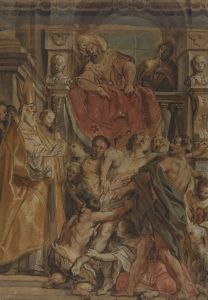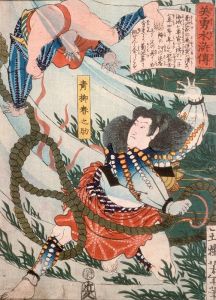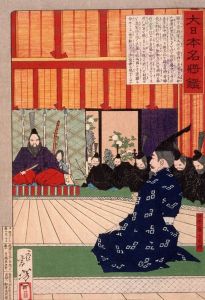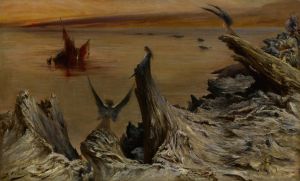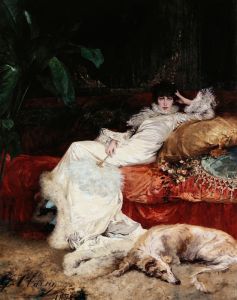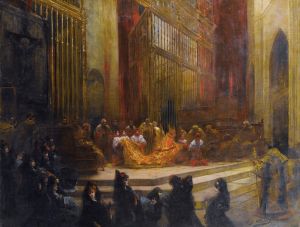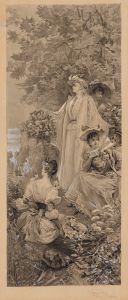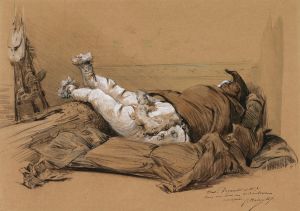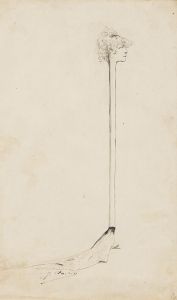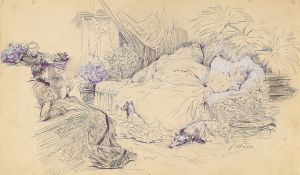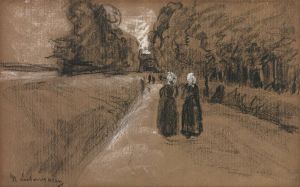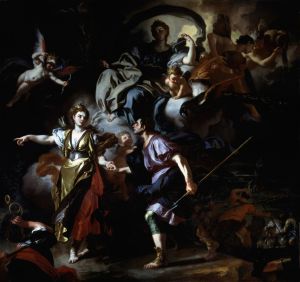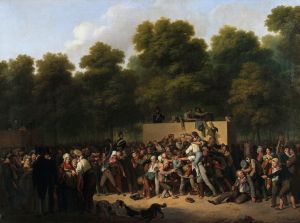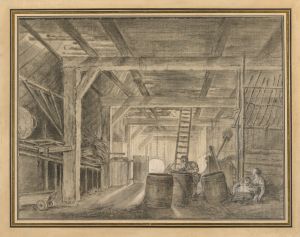
Fête champêtre aux environs de Paris
A hand-painted replica of Georges Jules Victor Clairin’s masterpiece Fête champêtre aux environs de Paris, meticulously crafted by professional artists to capture the true essence of the original. Each piece is created with museum-quality canvas and rare mineral pigments, carefully painted by experienced artists with delicate brushstrokes and rich, layered colors to perfectly recreate the texture of the original artwork. Unlike machine-printed reproductions, this hand-painted version brings the painting to life, infused with the artist’s emotions and skill in every stroke. Whether for personal collection or home decoration, it instantly elevates the artistic atmosphere of any space.
Georges Jules Victor Clairin (1843–1919) was a French painter and illustrator known for his portraits, Orientalist works, and depictions of theatrical and social scenes. One of his notable works, Fête champêtre aux environs de Paris (translated as Pastoral Festival in the Environs of Paris), exemplifies his ability to capture the elegance and charm of 19th-century French society.
This painting portrays a lively outdoor gathering, likely set in the countryside near Paris, as suggested by the title. The scene features elegantly dressed men and women engaging in leisure activities, reflecting the social customs and fashions of the Belle Époque period. Clairin's use of vibrant colors and fluid brushstrokes conveys a sense of movement and festivity, characteristic of his style. The composition highlights his skill in depicting group dynamics and the interplay of light and shadow in outdoor settings.
Clairin was a contemporary and close friend of actress Sarah Bernhardt, and his works often reflect the theatricality and opulence of the era. While Fête champêtre aux environs de Paris does not directly reference Bernhardt or the theater, it shares the same sense of drama and celebration found in many of his other pieces. The painting aligns with the broader tradition of fête champêtre scenes in art history, which date back to the Rococo period and emphasize idyllic, pastoral gatherings.
The exact date of the painting's creation is not widely documented, but it is consistent with Clairin's mature period, during which he focused on capturing the vibrancy of Parisian life and its surroundings. The work is representative of the cultural and artistic milieu of late 19th-century France, a time when artists sought to depict both the refinement and the pleasures of modern life.
As of now, specific details about the painting's current location or provenance are not readily available in public records. However, Clairin's works are held in various private collections and museums, including the Musée d'Orsay in Paris and other institutions dedicated to 19th-century French art.
This painting serves as a testament to Clairin's ability to blend realism with a touch of romanticism, offering viewers a glimpse into the leisurely pursuits of his contemporaries. Through Fête champêtre aux environs de Paris, Clairin captures not only a moment in time but also the spirit of an era defined by its celebration of beauty, culture, and social interaction.





